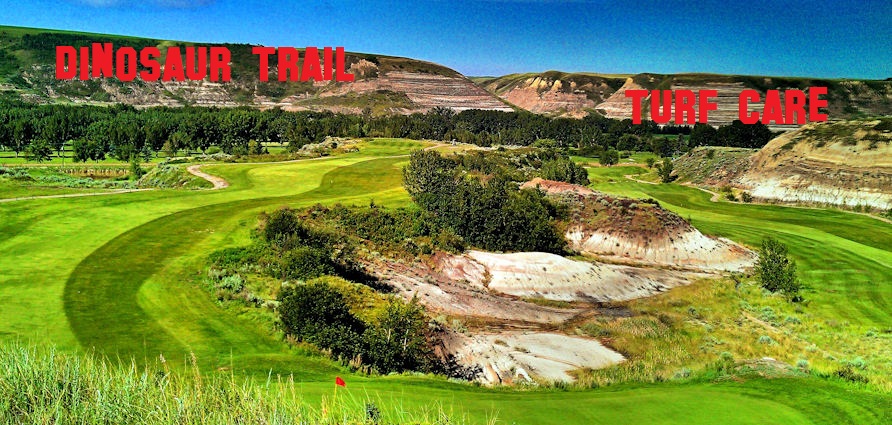It is hard to believe the course has been open for 5 months with hopefully another 6 weeks of good weather ahead of us. We have not received any frost since early May, but morning temperatures are usually in the 5 to 10 degree range. Clipping yields for greens have drastically reduced to the point where we have stopped applying growth regulator, and our main goal going into the fall is to keep the greens as healthy as possible. In the upcoming weeks we will start to raise the HOC on our greens gradually while incorporating 2 to 3 roll days a week.A deep tine core aeration will take place in the third week in September, allowing for ample time for the greens to heal before turf becomes dormant.
The last few weeks have kept us busy at Dino Trail. The irrigation system has decided to cause us more problems, as two leaks on the mainline were repaired and more heads were replaced. We have repaired or replaced over 100 heads on the course this season, with still another 15 heads needing to be addressed on the back nine. As well the bearings failed in our river pump resulting in the pump seizing and needing to be replaced. In the next two weeks we plan to install our new wash pad and irrigation test station which will help save alot of time and money.
 |
| Finished Cartpath on Hole 14 |
As well we completed the prep work for the cartpath on the 14th hole, so that Enviropaving out of Red Deer could come in last week and install the rubberized asphalt. Not having any experience with the product I did not know what to expect, but I am very happy with the end result. The company installing the surface has never done such a big job, as they are used to doing walkways and driveways. This resulted in them using three times as much rubber and binding agent compared to what they had budgeted for. The process of laying the rubberized asphalt is very labour intensive, as everything is done manually other than the mixing of the rubber with the binding agent. The key to the products strength when being laid on gravel is the use of Eco-Grid under the product. It helps displace the weight traveling over the surface evenly and provides a solid base.
Overall this product is going to provide a great non skid surface on a serverely sloped cart path. The total area of the path done was just under 3000 square feet, with the minimum thickness of the rubber surface being 1 1/2 inches. The product is an expensive alternative to regular asphalt, but with a 5 year warranty and with grants available to cover the costs, it turned out to be the best option for us. In the future I may attempt to lay some of the product in house, or use the Eco-Grid in high traffic areas under turf to prevent compaction. By far the biggest cost in the installation of this product is labour. as a 2000 lb bag of rubber crumb is around $350 dollars and a drum of the binding agent is around $1000. A close estimate for this project would be around $10 a square foot. This includes the Eco-Grid, gravel, rubberized asphalt, and does not include in house labour.
 |
The gravel base rolled and compacted followed by
the installation of the Eco-Grid |
 |
| Filling the Eco-Grid with 3/4 crush |
 |
| Enviropaving trailer with mixer and rubber storage bin |
 |
| Drums of binding agent. One drum does a 2000 lb bag of rubber crumb |
 |
| Using a workman to haul the product to the cartpath |
 |
| Ryan and his crew laying the product |







